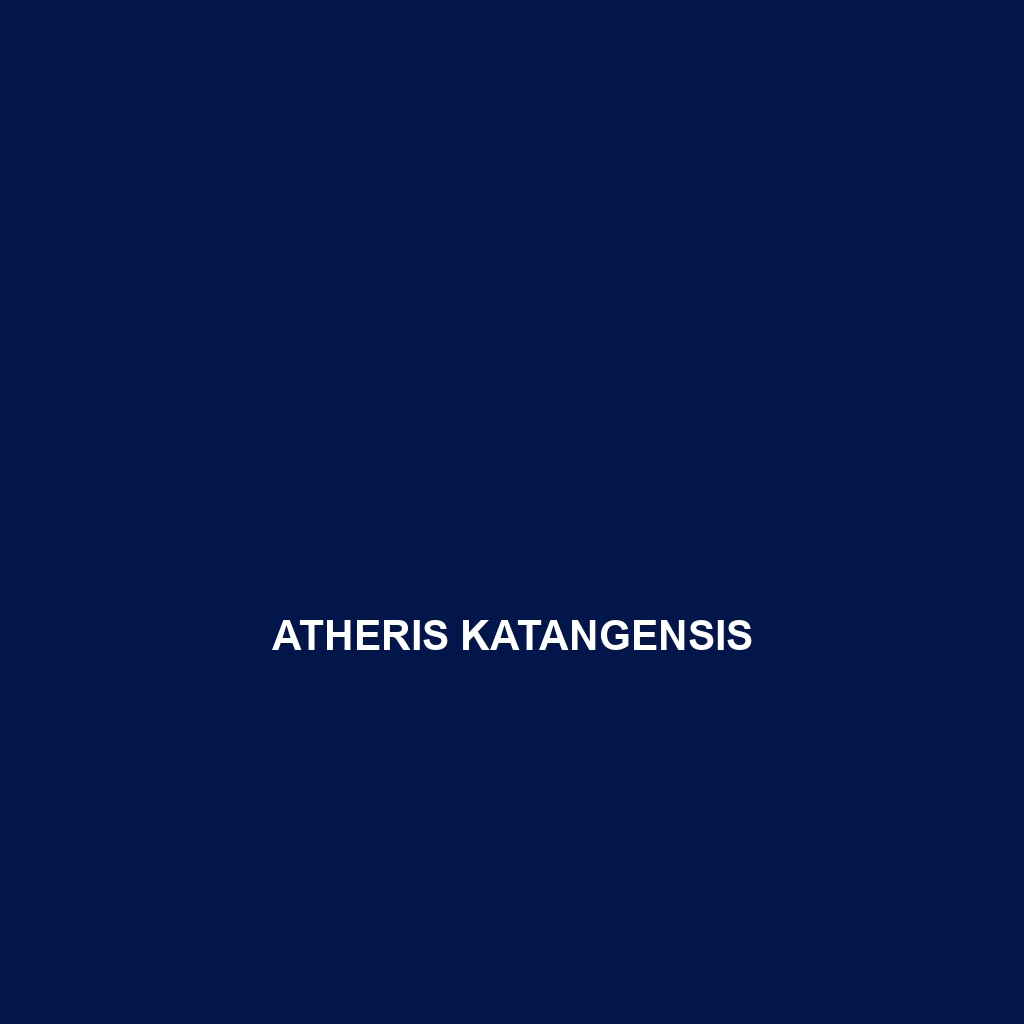Atheris katangensis: The Katanga Bush Viper
Common Name: Atheris katangensis
Scientific Name: Atheris katangensis
Habitat
Atheris katangensis, commonly known as the Katanga bush viper, is primarily found in the dense rainforests of central Africa, specifically within the Democratic Republic of the Congo and Zambia. This species thrives in humid, tropical environments, often inhabiting areas with abundant vegetation and leaf litter, which provide essential cover and hunting grounds.
Physical Characteristics
The Katanga bush viper is a relatively small to medium-sized snake, measuring around 50 to 70 cm in length. Its striking appearance features a vibrant green coloration with yellow and black markings, allowing it to blend seamlessly into the foliage of its habitat. The viper’s triangular-shaped head and distinctively large eyes contribute to its unique morphology, making it an intriguing subject for study.
Behavior
Atheris katangensis exhibits a primarily arboreal lifestyle, often found resting on tree branches or curled among leaves. The species is known for its ambush predation behavior, using its cryptic coloration for effective camouflage. This viper is typically nocturnal, becoming more active at night when it hunts for food. Its slow, measured movements allow it to remain undetected by both prey and predators alike.
Diet
The diet of Atheris katangensis mainly consists of small mammals, birds, and lizards. As a venomous snake, it possesses specialized hemotoxic venom that aids in subduing its prey. This unique feeding habit not only showcases the viper’s predatory skills but also highlights its role in controlling local prey populations.
Reproduction
Atheris katangensis is ovoviviparous, meaning that it gives birth to live young rather than laying eggs. The breeding season typically occurs during the rainy months, when the availability of resources is high. Females can give birth to a clutch of 5 to 15 offspring, which are independent from birth and possess the same striking coloration as adults.
Conservation Status
Currently, Atheris katangensis is classified as ‘Vulnerable’ on the IUCN Red List. Threats to its population include habitat loss due to deforestation and agricultural expansion. Conservation efforts are crucial in protecting the natural habitats of this unique snake to ensure its survival.
Interesting Facts
One fascinating aspect of the Katanga bush viper is its ability to adapt its hunting strategies depending on the behavior of its prey. Additionally, this species has become a subject of interest for herpetologists due to its striking coloration and behaviors, making it a popular choice among snake enthusiasts and researchers.
Role in Ecosystem
Atheris katangensis plays a vital role in its ecosystem as a predator of small animals, helping to maintain a balanced food web. Its presence indicates a healthy environment, and by controlling the populations of its prey, it contributes to the overall health of the rainforest ecosystem.
